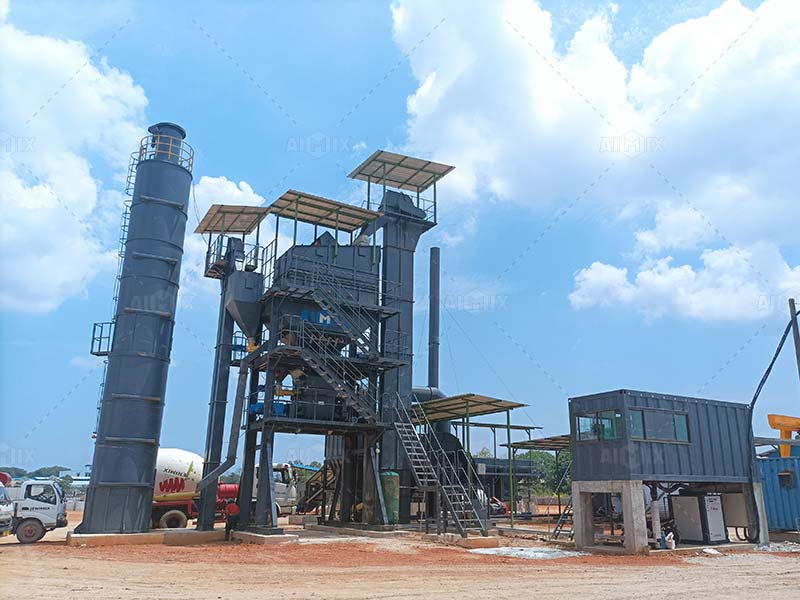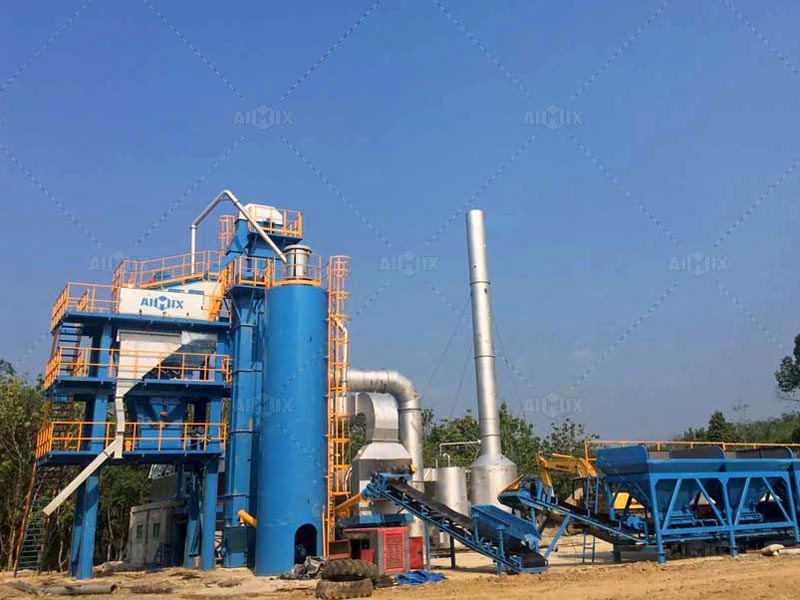Asphalt, a staple of modern road construction, plays an indispensable role in our daily lives. It serves as the sturdy foundation beneath our vehicle wheels and the smooth surface of our highways, ensuring safe and efficient transportation. Yet, the production of asphalt is far from a one-size-fits-all process. This article delves into the intriguing world of asphalt production, focusing on the key disparities between hot mix and cold mix asphalt plants.
In the realm of asphalt production, two distinct methodologies reign supreme: hot mix asphalt (HMA) and cold mix asphalt (CMA) plants. Each possesses its own set of characteristics, production techniques, and applications. This article aims to unravel the intricacies of these methods, shedding light on when and why one might opt for hot mix or cold mix asphalt.
Hot Mix Asphalt Plants
A. The Heat of the Matter
-
High Temperatures and the Asphalt Mix
Hot mix asphalt plants live up to their name by utilizing high temperatures during production. The aggregate and binder are heated to a specific temperature range, typically between 300 and 350 degrees Fahrenheit (149 to 177 degrees Celsius). This elevated temperature is crucial for achieving the desired asphalt consistency.
-
Aggregate Drying and Heating
In the HMA process, aggregates, such as gravel, sand, and stone, undergo a dual transformation. First, they are dried to eliminate moisture content. Then, they are heated to the aforementioned high temperatures. This dual treatment ensures that the aggregates are primed for the subsequent mixing phase. You can check this page for aggregate drying and heating details: https://aimixasphaltplant.com/asphalt-mixing-plant/.

B. Mixing It Up
-
Binder and Aggregate Fusion
The pivotal moment in hot mix asphalt production occurs when the heated aggregates meet the binder. Typically, the binder is a petroleum-based substance like bitumen. This union results in a cohesive and highly durable asphalt mixture, ideal for various road construction applications.
-
Temperature Control
Precision in temperature control is paramount in HMA plants. Maintaining the correct temperature range throughout the process is essential to ensure the quality and consistency of the final product. Modern hot mix asphalt plants are equipped with sophisticated systems to monitor and regulate temperatures with precision.
C. Advantages and Applications
-
Superior Durability
Hot mix asphalt is renowned for its exceptional durability and resistance to wear and tear. It can withstand heavy traffic loads and harsh weather conditions, making it the top choice for high-traffic roadways and highways.
-
High-Volume Production
HMA plants excel at producing large volumes of asphalt quickly and efficiently. This makes them ideal for sizable construction projects where time is of the essence.
-
Paving Perfection
The smooth, well-compacted surface achieved with hot mix asphalt contributes to a comfortable and safe driving experience. This aesthetic appeal and functionality make HMA the preferred choice for many road construction projects.
Cold Mix Asphalt Plants
A. A Chilled Approach
-
Ambient Temperature Production
Unlike their hot mix counterparts, cold mix asphalt plants for sale operate at ambient temperatures. This eliminates the need for energy-intensive heating processes, making them an environmentally conscious choice.
-
Emulsion-Based Binders
Cold mix asphalt relies on emulsion-based binders, often featuring water as a key component. These binders remain stable at lower temperatures and facilitate the mixing of aggregates without the need for excessive heat.
B. Mixing without the Heat
-
Slow Curing Process
CMA production involves a slower curing process compared to HMA. This allows for greater flexibility, making it suitable for patching, pothole repairs, and cold-weather paving projects.
-
Versatile Aggregates
Cold mix asphalt can incorporate a wider range of aggregates, including recycled materials. This versatility makes it a preferred choice for certain eco-friendly projects.
C. Advantages and Applications
-
Cold-Weather Paving
One of the primary advantages of cold mix asphalt is its ability to be used in cold weather conditions. It remains workable at lower temperatures, making it an essential tool for maintaining and repairing roads during the winter months.
-
Immediate Use and Repairs
CMA can be used immediately after production, eliminating the need for extended curing times. This allows for quick and efficient repairs, reducing downtime on roadways.
-
Environmentally Friendly Solution
The reduced energy consumption and potential for using recycled materials make cold-mixed asphalt a greener choice in asphalt production.

Comparing the Two
A. Factors Influencing Choice
-
Climate and Weather Conditions
The choice between hot mix and cold mix asphalt largely depends on the climate and weather conditions of the project site. Hot mix is preferred for warm and temperate regions, while cold mix shines in colder climates.
-
Project Size and Time Constraints
Project size and time constraints play a crucial role in determining which asphalt production method to employ. Hot mix plants are efficient for large-scale projects with tight deadlines, whereas cold mix is advantageous for smaller repairs and projects with flexible timelines.
B. Cost Considerations
-
Initial Investment vs. Long-Term Savings
While hot mix asphalt plants require a higher initial investment due to their complex heating systems, they may offer long-term savings through the durability of the asphalt they produce. Cold mix plants are more cost-effective to set up but may require more frequent maintenance.
-
Maintenance and Energy Costs
Maintenance and energy costs differ significantly between the two methods. Hot mix plants require more energy for heating, which can result in higher operating costs. Cold mix asphalt plant, on the other hand, benefits from reduced energy consumption and simpler maintenance requirements.
In conclusion, the choice between hot mix and cold mix asphalt plants hinges on a multitude of factors, including climate, project size, and budget constraints. Understanding the nuances of these two methods is essential for informed decision-making in the realm of asphalt production and infrastructure development. Whether it’s the heat of hot mix or the chill of cold mix, both play integral roles in shaping the roads we travel on daily.
